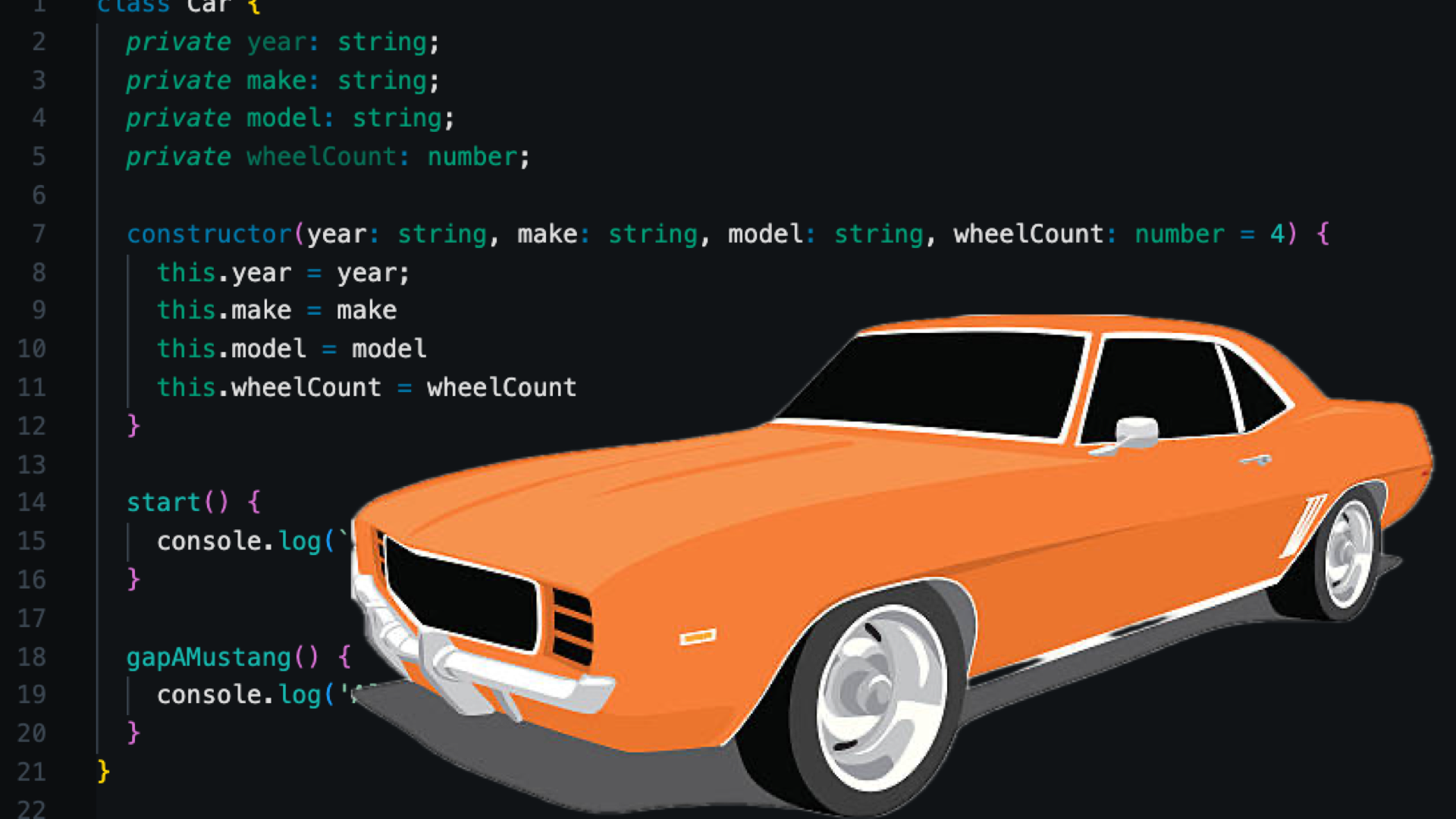Benfits of Classes in JavaScript
 Erich Buelow
Erich Buelow
JavaScript and TypeScript are versatile programming languages that allow developers to approach problems in various ways. One of these approaches involves using classes, which provide a structured and organized way to define and create objects. Here, we'll explore why using classes can be a beneficial choice in JavaScript and TypeScript development.
Modularity and Encapsulation
Classes enable you to encapsulate data and behavior into well-structured units. This modularity promotes code reusability and maintainability. You can define properties and methods within a class, ensuring that data remains accessible only through well-defined interfaces.
class Car {
constructor(make, model) {
this.make = make
this.model = model
}
start() {
console.log(`${this.make} ${this.model} is starting.`)
}
}
const myCar = new Car('Chevrolet', 'Camaro')
const myCar2 = new Car('Chevrolet', 'Corvette')
Without a class 🫤:
// Using a constructor function
function createCar(make, model) {
const car = {}
car.make = make
car.model = model
return car
}
const myCar = createCar('Chevrolet', 'Camaro')
const myCar2 = createCar('Chevrolet', 'Corvette')
// Using object literals
const myCar = {
make: 'Chevrolet',
model: 'Camaro',
}
const myCar2 = {
make: 'Chevrolet',
model: 'Camaro',
}
In this example, we define a createCar function to create car objects. We also create a person object using an object literal. However, this approach lacks the structure and encapsulation provided by classes.
Inheritance
Classes support inheritance, allowing you to create hierarchies of objects. This feature enables you to create base classes with shared functionality and extend them to create specialized subclasses. In TypeScript, this is particularly valuable for maintaining type safety.
class Vehicle {
// Base class
constructor(make) {
this.make = make;
}
}
class Car extends Vehicle {
// Subclass
constructor(make, model) {
super(make);
this.model = model;
}
}
Type Annotations (TypeScript):
If you're using TypeScript, classes provide a strong foundation for defining custom types. You can use type annotations to specify the shape of class instances, which enhances code readability and helps catch type-related errors at compile-time.
class Car {
constructor(public name: string, public price: number) {}
}
const laptop: Product = new Product('Laptop', 999);
Readability and Maintainability
Classes offer a structured and easily understandable way to define objects. When working on collaborative projects or revisiting your own code in the future, classes make it simpler to comprehend and modify the codebase.
Not Convinced?
Hopefully this list will help:
Code Reusability: Classes allow you to encapsulate functionality, making it easier to reuse code. You can create instances of a class in various parts of your program, reducing the need for redundant code.
Easier Testing: Classes promote a modular approach to coding. This makes it simpler to write unit tests for individual class methods, enhancing the overall testability of your code.
Clearer Documentation: Classes provide a natural structure for documenting your code. You can use comments and JSDoc annotations to describe the purpose and usage of the class and its methods.
Improved Debugging: When an error occurs, using classes can help you pinpoint the issue more efficiently. Debugging tools and IDEs often provide better support for debugging class-based code.
Encapsulation of State: Classes encapsulate data, preventing direct manipulation from external code. This reduces the risk of unexpected side effects and enhances the predictability of your program.
Enhanced Readability: Classes promote a clear and consistent naming convention for methods and properties, making your code more readable and understandable for other developers.
Framework and Library Compatibility: Many JavaScript frameworks and libraries are designed with class-based patterns in mind. Using classes can make it easier to integrate your code with such tools.
Support for Design Patterns: Classes provide a foundation for implementing design patterns such as Singleton, Factory, and Observer, which can help solve common software design problems.
Improved Collaboration: When working in a team, using classes with well-defined interfaces and methods can make it easier for team members to collaborate on different parts of a project without stepping on each other's toes.
Scalability: As your project grows in complexity, classes can help you manage the increased codebase more effectively by providing a structured way to organize your code.
Conclusion
In conclusion, while JavaScript and TypeScript offer multiple paradigms for object-oriented programming, using classes can bring organization, encapsulation, inheritance, and type safety to your code. It's a valuable tool, especially when building larger and more complex applications. However, your choice of programming approach may also depend on the specific context and requirements of your project.
Subscribe to my newsletter
Read articles from Erich Buelow directly inside your inbox. Subscribe to the newsletter, and don't miss out.
Written by
